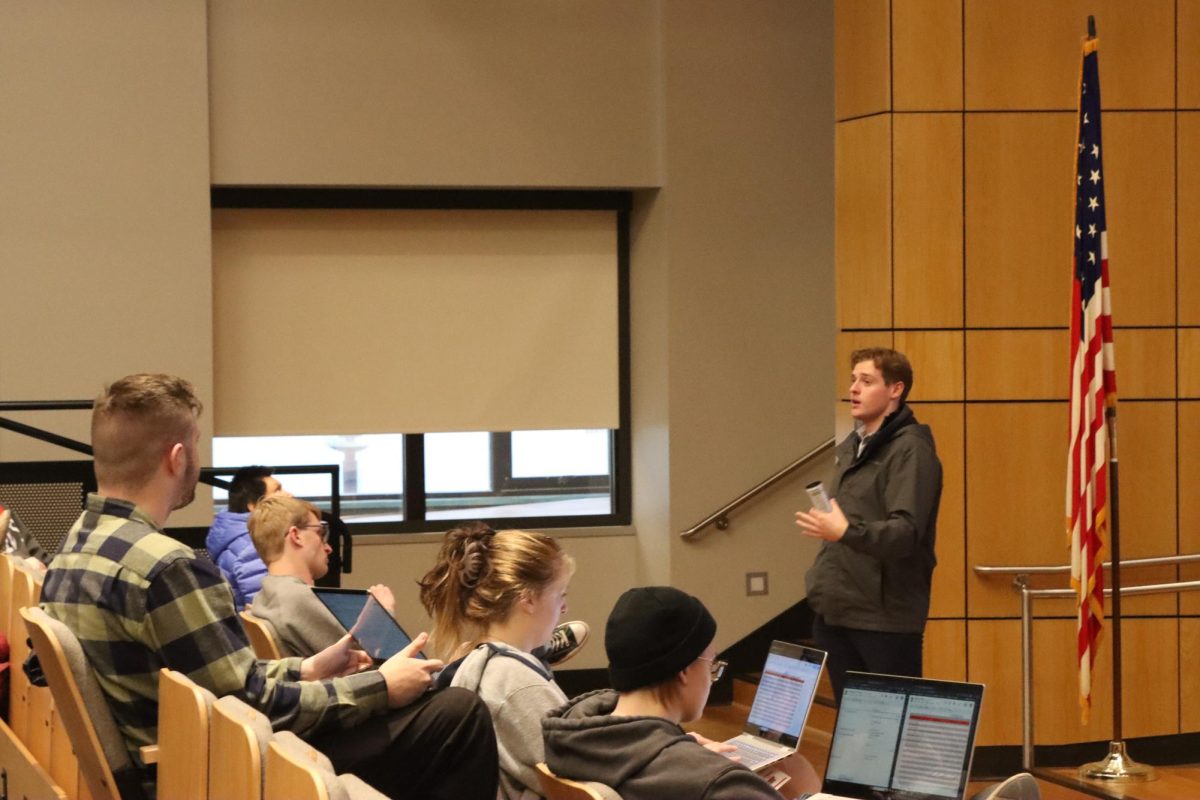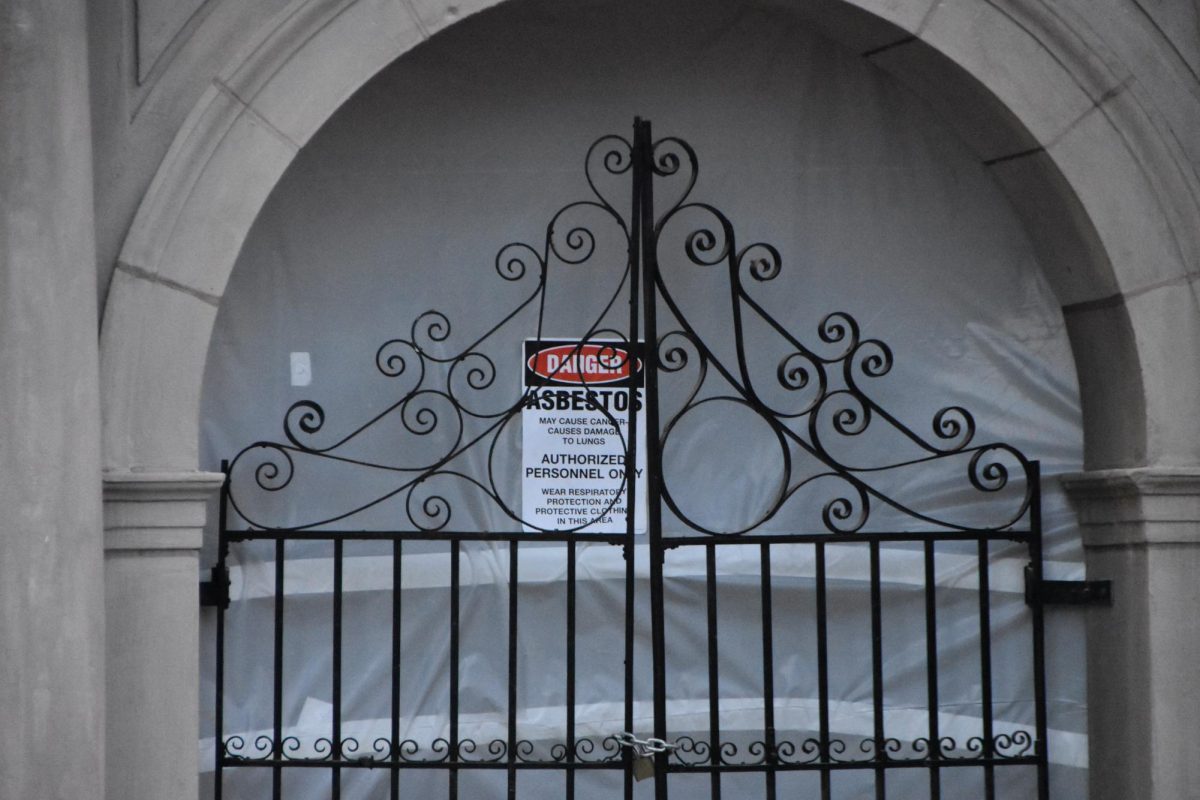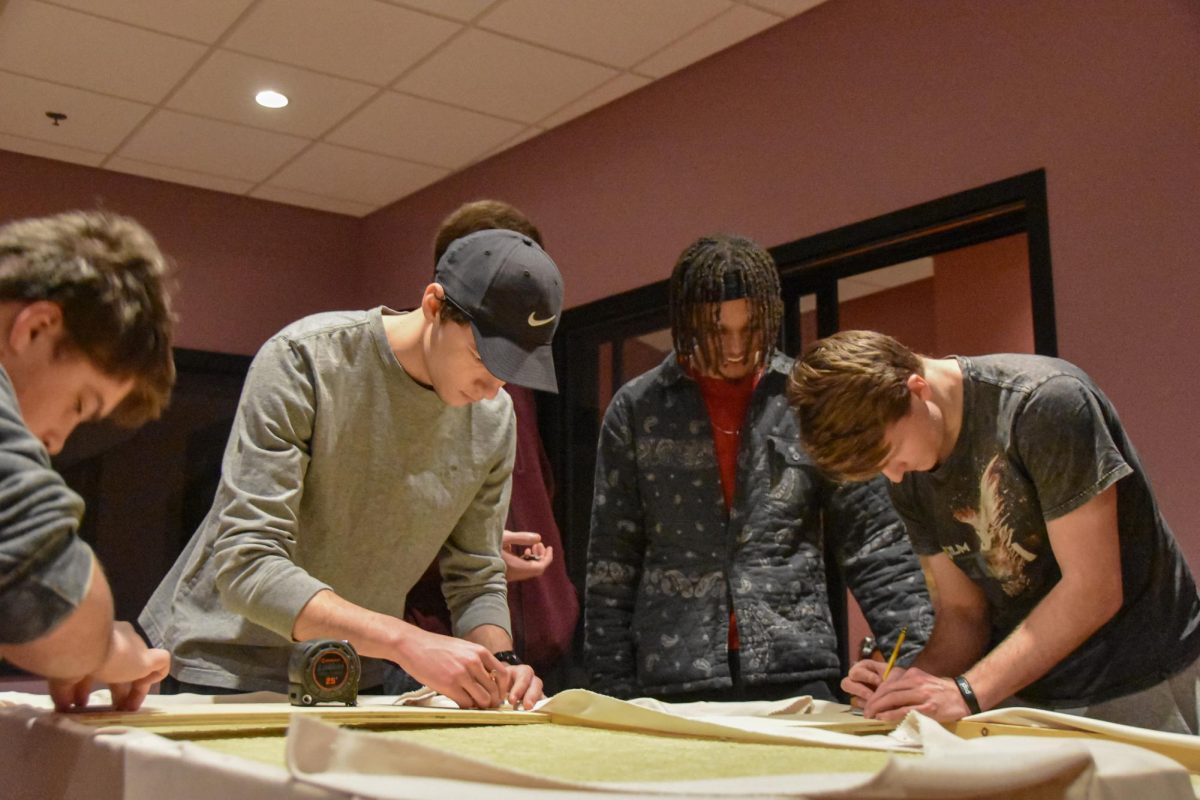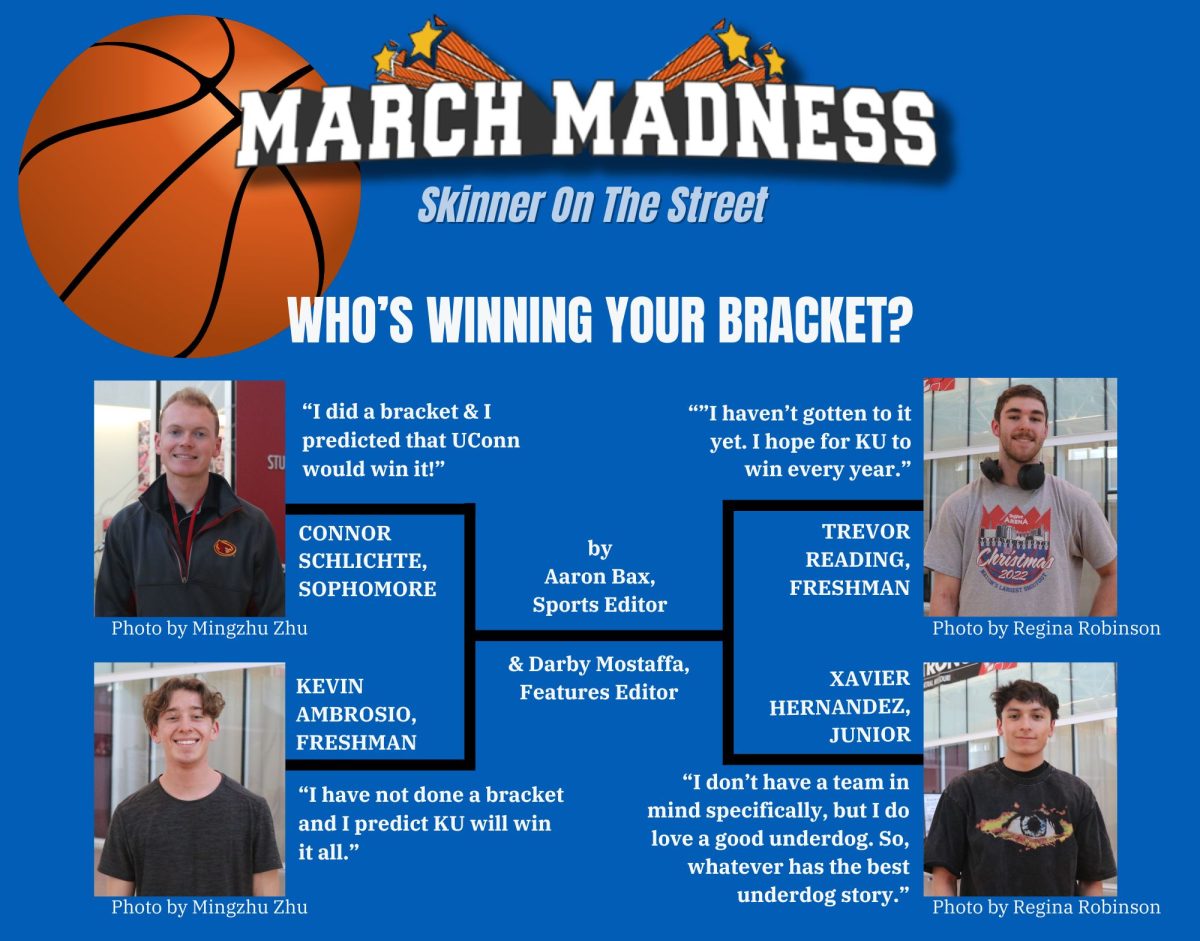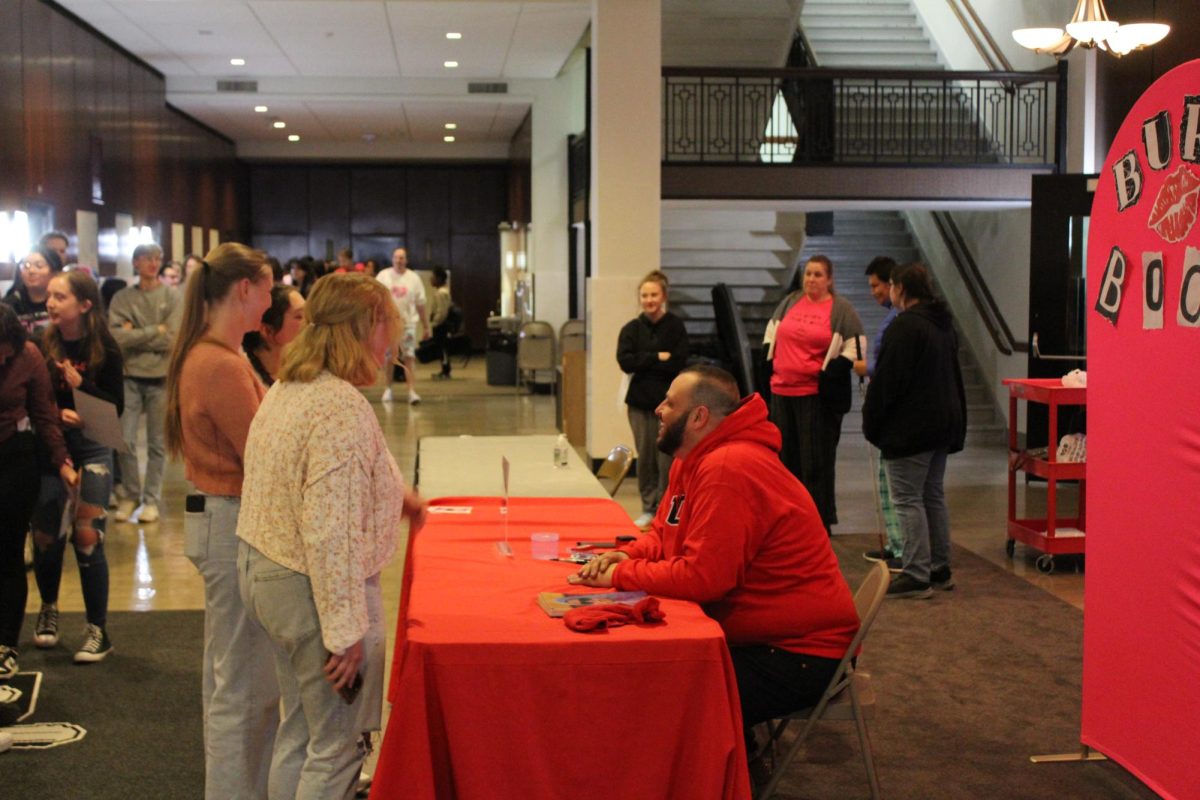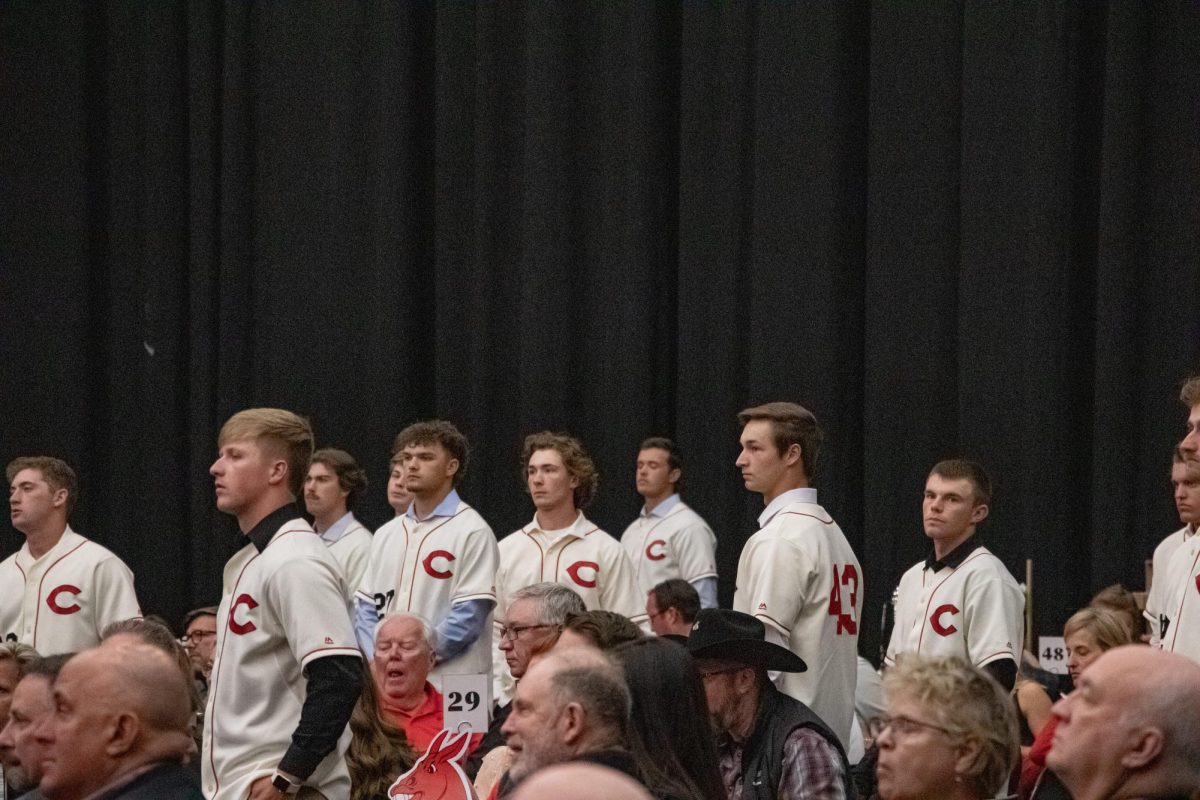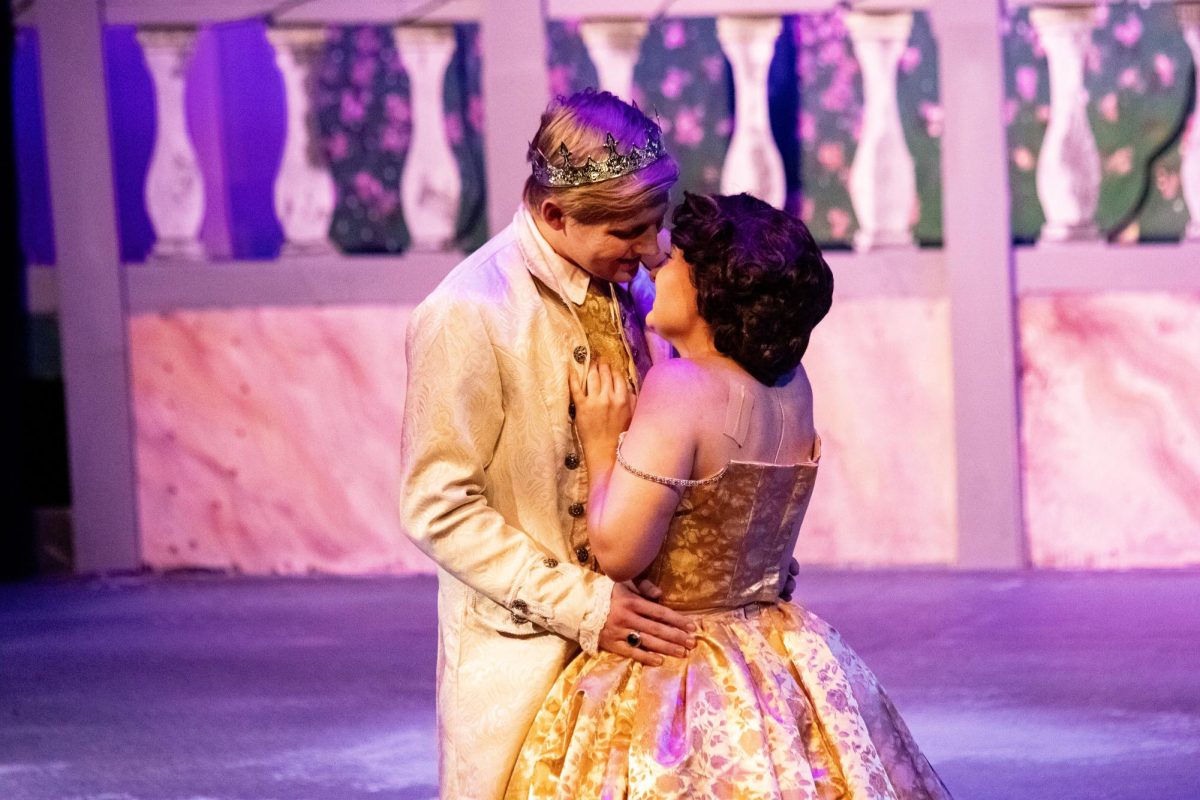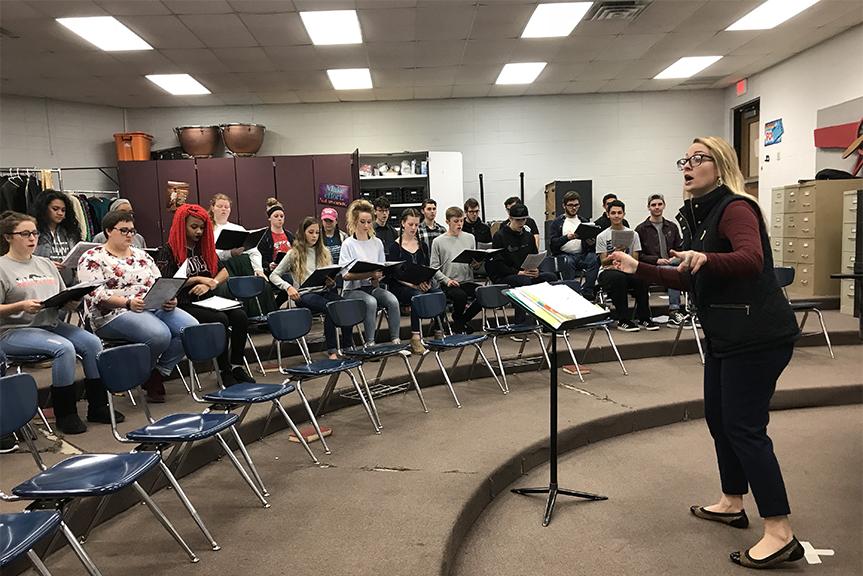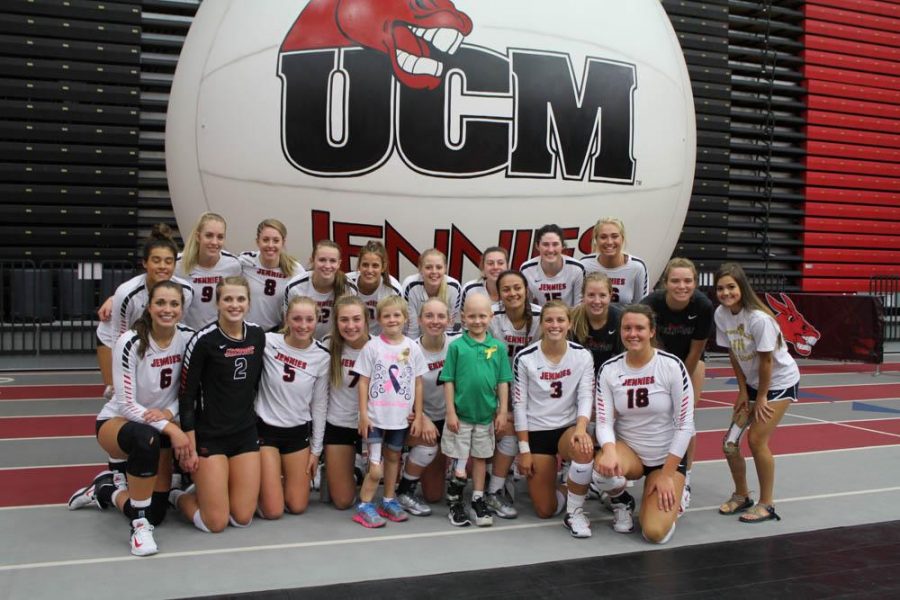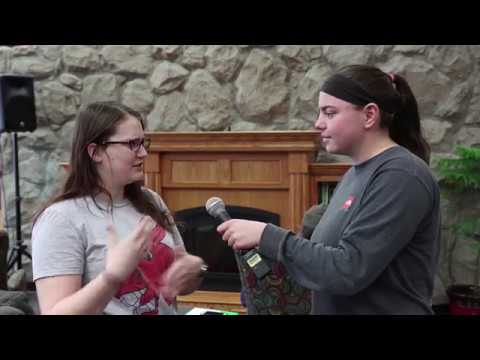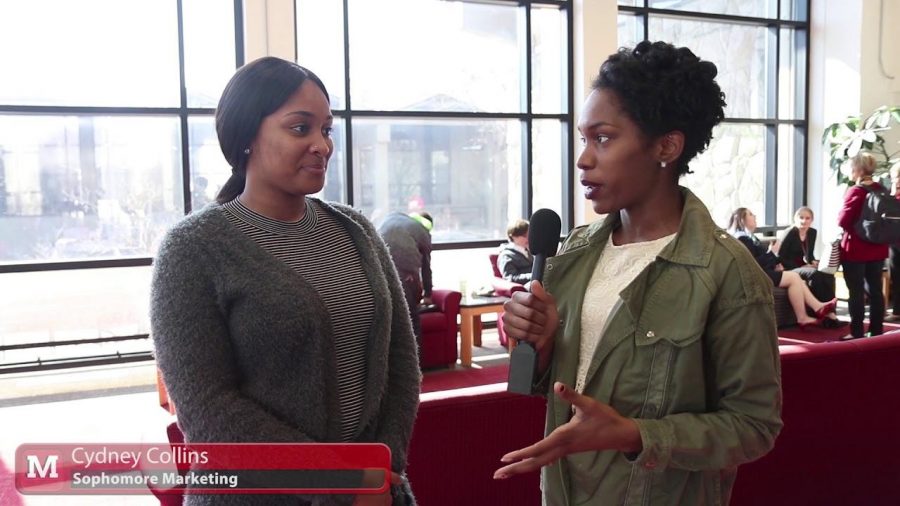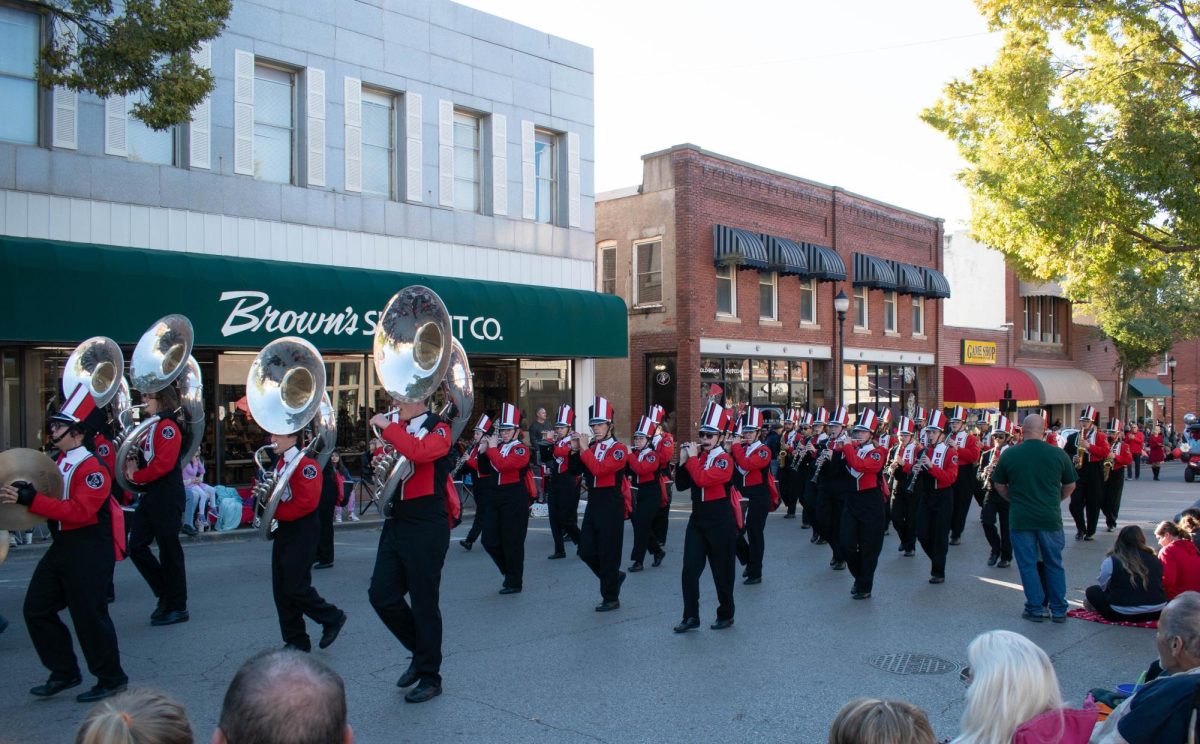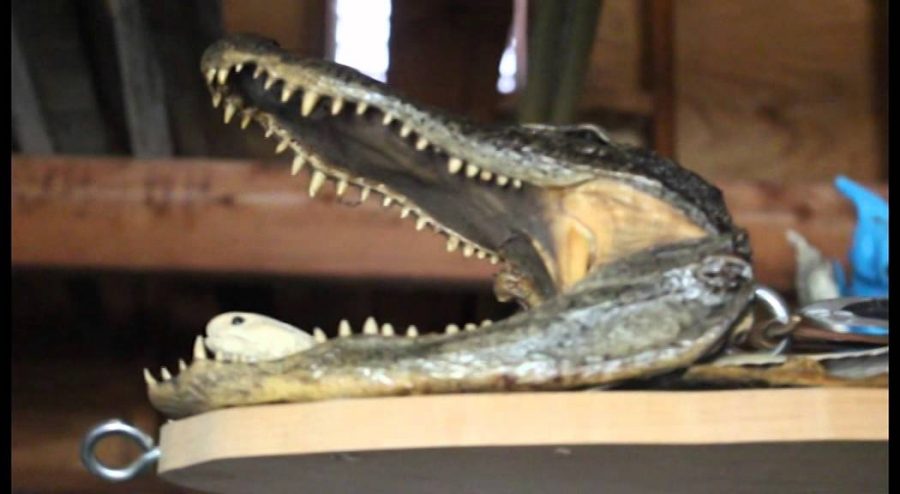By ANDREA LOPEZ
Features Editor
(WARRENSBURG, Mo., digitalBURG) — Mermaids, machinery and mystery – the legacy continues. While the Warrensburg community may have lost a unique individual a couple years ago, the artistry of Jim Myers lives on through preservation and exhibition efforts of others in the community.
“Whatever struck his fancy at the time – that’s what he did,” said Teena Simon, Myer’s wife. “He worked with a lot of wood, he loved bright colors – he would do anything and people would call it abstract.”
Although Myers died June 15, 2013, from kidney failure due to complications with pneumonia, his artwork has continued to gain popularity.
“It would be easier for me to show (people) his work then actually try and convince someone how I would want him to be remembered,” Simon said. “Every person is going to know him differently.”
To Simon, Myers was a man of his own breed.
“He was his own person – super intelligent, of course very prolific in his art and very talented,” she said. “He loved to travel, he spoke a lot of different languages – he was just fun and he really enjoyed life.”
Myers’ adventures included studying at the Hollywood Art Center School in California, in addition to the Paris American Academy of Art in France.
“Like most artists, your style changes as you grow older or travel or get inspired,” Simon said. “Anything could inspire him. It could be a picture in a magazine, it could be something he saw in passing a pony in a field – it didn’t matter to him. That’s just how he was.”
When Myers died, he left behind more than 1,000 pieces of art to a wife who didn’t know what to do with them.
“I was panicking because I had so much artwork, and I really did not know where to start to keep it all together and cataloged,” Simon said.
An email exchange between Simon and Amber Clifford-Napoleone, associate professor of anthropology at UCM and curator at the McClure Archives University Museum, became the game changer. After seeing Jim Myers’ art collection up close, Clifford-Napoleone said she knew the perfect person for the job: UCM senior anthropology major Madison Sommers.
“It’s not very often that an undergraduate student has the opportunity to deal with one collection in its entirety – especially when that collection hasn’t been documented before, and Jim’s collection had not,” Clifford-Napoleone said. “There was no guide book or inventory, or anything like that. There was just a mass of work that Jim had left.”
When Sommers experienced the quantity of the artwork, she said she wanted to take the process slow.
“When I first walked in and I saw how much art there was, hanging everywhere, it was a little overwhelming, and so that was just daunting,” Sommers said. “I didn’t know where to start, so I had to just randomly, basically pick an area – and I picked the bathroom, because it was small and closed and not that full of pieces.”
From mismatched water creatures and boats to paintings of Che Guevara, Sommers said Myers’ art collection often displayed his sense of humor.
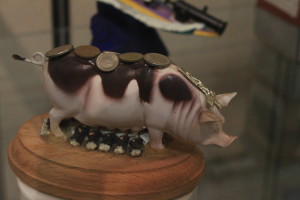
From a structure of a pig feeding priests to posters of Che Guevara, Warrensburg native Jim Myers’ art collection is being remembered at the McClure Archives and University Museum at UCM.
“One of the pieces here, actually, is a pig who is breastfeeding several priests with an upside-down cross on its head and money on its back,” Sommers said. “So I can only imagine what that’s supposed to represent. I don’t want to put any labels on there – to say what he was thinking – but I just find it politically motivated and very funny.”
Being as specific as possible, Sommers cataloged each individual art piece in a strict manner.
“I would take a piece, I would photograph it, write a description, label it – so if it was a painting, drawing, sculpture, assemblage, whatever it was, I would label it,” Sommers said. “Then I would assess its condition, if it was a good condition, fair condition, poor condition. I would write its location, depending on the quadrant map, where it was located (in the house).”
One year later, Sommers said she found herself completing the work she never thought would end. However, she had one special project in mind.
“I had an honors project, and I asked Teena if she would be interested in having an exhibit – letting me exhibit some of Jim’s pieces,” Sommers said. “It gives you a new perspective on what art can be and what you can use to be art. A lot of people think it’s canvas or huge big sculptures of metal that take a lot of time, which he does have a few of those.”
When it came to selecting the 59 pieces featured in the Jim Myers Art Collection, Sommers said she had one goal in mind.
“I knew that I wanted to grab a little bit of everything of his work,” she said. “So his sculptures, the little toys he modified, his paintings, prints, drawings – I just wanted to try and represent what he did. I also had to consider the condition and whether or not it would fit in my car. Some of the things I wanted to bring didn’t fit in the cases, so that was another consideration.”
Sommers said the value of the collection is subjective.
“Art in any form, you can’t really put a value,” Sommers said. “Like Mozart in his day, you know $10, but now, anything he composed is so much. Some of these pieces artwork worth remembering do have price tags on them from when (Jim) was selling them, and you’ll see some prints and some sketches going for $35 to $40. But to the insurance company, that’s not what it is worth. It’s worth the sheet of paper and the ink that’s on it.”
Regardless of the face value, Clifford-Napoleone said Myers’ artwork greatly benefits the community.
“In Jim’s collection, you can see the evolution of an artist over time – the different influences he’s dealing with – the different sort of media he’s trying to deal with at different times,” Clifford-Napoleone said.
“You can see pop culture influences – a period of time where a lot of his stuff has Barbie dolls in it – there’s a period where his stuff has Che Guevara posters in it, so you can see what was going on in his mind, too. It’s fascinating and especially now, and really, for students who are in a place like mid-Missouri, that’s not necessarily the kind of material you get exposed to otherwise to really see the evolution of an artist.”
While Simon may have all of her husband’s artwork cataloged, it still leaves her with one problem: preserving the collection.
“He did do some commissioned works – only for people he really cared to do it for,” she said. “It was really hard to get him to let go of any of his work. His thinking was, once you sell it, it doesn’t belong to you anymore and it’s gone forever. So that’s why I have well over 1,000 pieces of artwork.
“I don’t want it to just be in a storage area. So that is our next step – caring for it and then where to go next.”
The Jim Myers Art Collection is on display in the McClure Archives and University Museum in the James C. Kirkpatrick Library until Oct. 2. The exhibit is free and open to the public and can be viewed from 8 a.m. to 4:30 p.m. Monday through Friday.
Recent Stories
- New Trend: Artists switching genres
- UCM Greek Life Prepares for Greek Week
- “Xanadu”, the absurd and the heartfelt show by UCM Theatre
- Spring Break Poll
- Skinner on the Street
- SGA to hold upcoming election
- “Now that’s a party!”: A “Mean Girls” (2024) Review
- Mo’s Activity Council hosts Mean Girls actor, Daniel Franzese
- Former World Series MVP speaks at UCM First Pitch Banquet
- UMG has falling out with TikTok due to contract diputes
Artwork worth remembering: Jim Myers
Written by Muleskinner Staff
September 19, 2015
Story continues below advertisement
Leave a Comment
More to Discover

